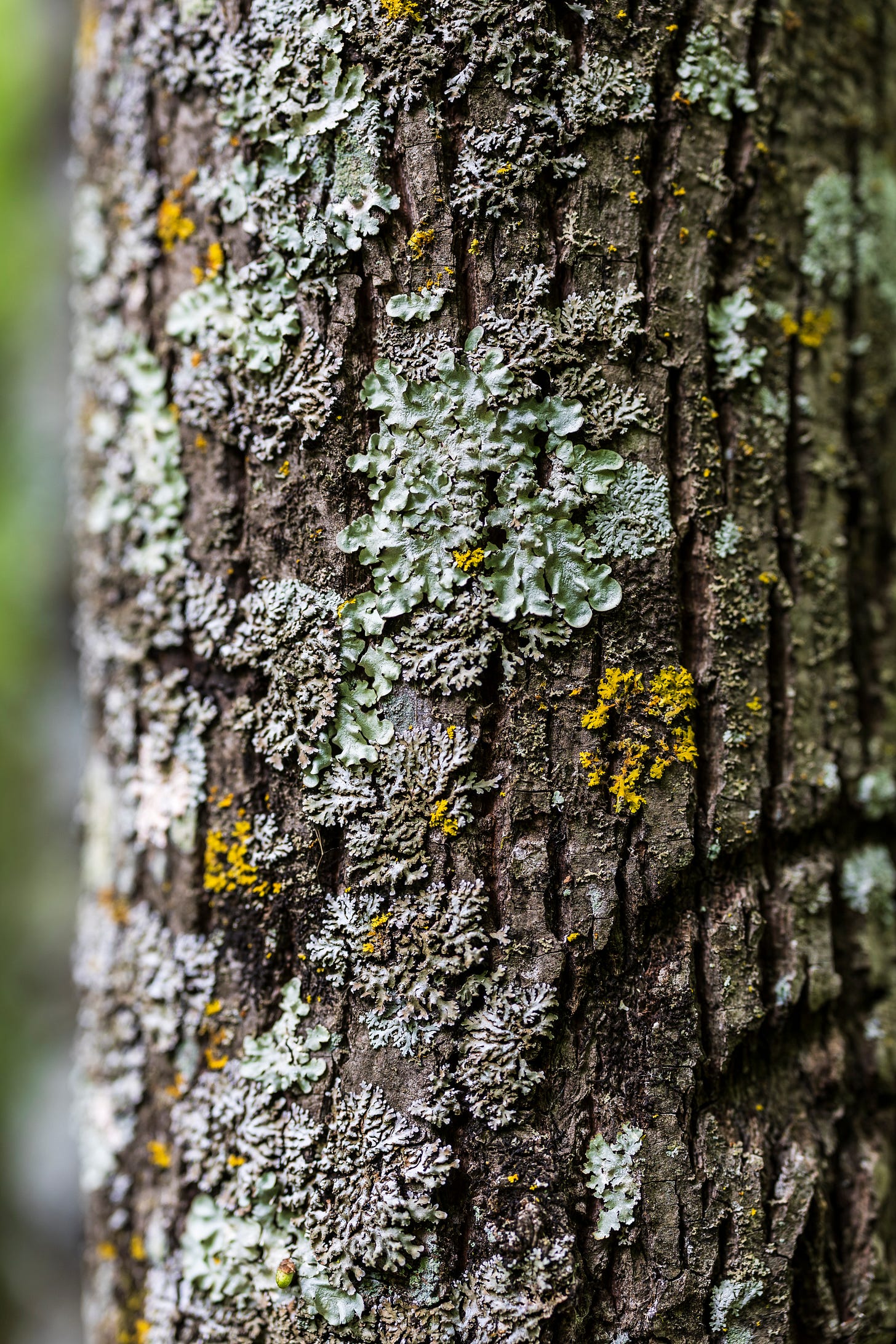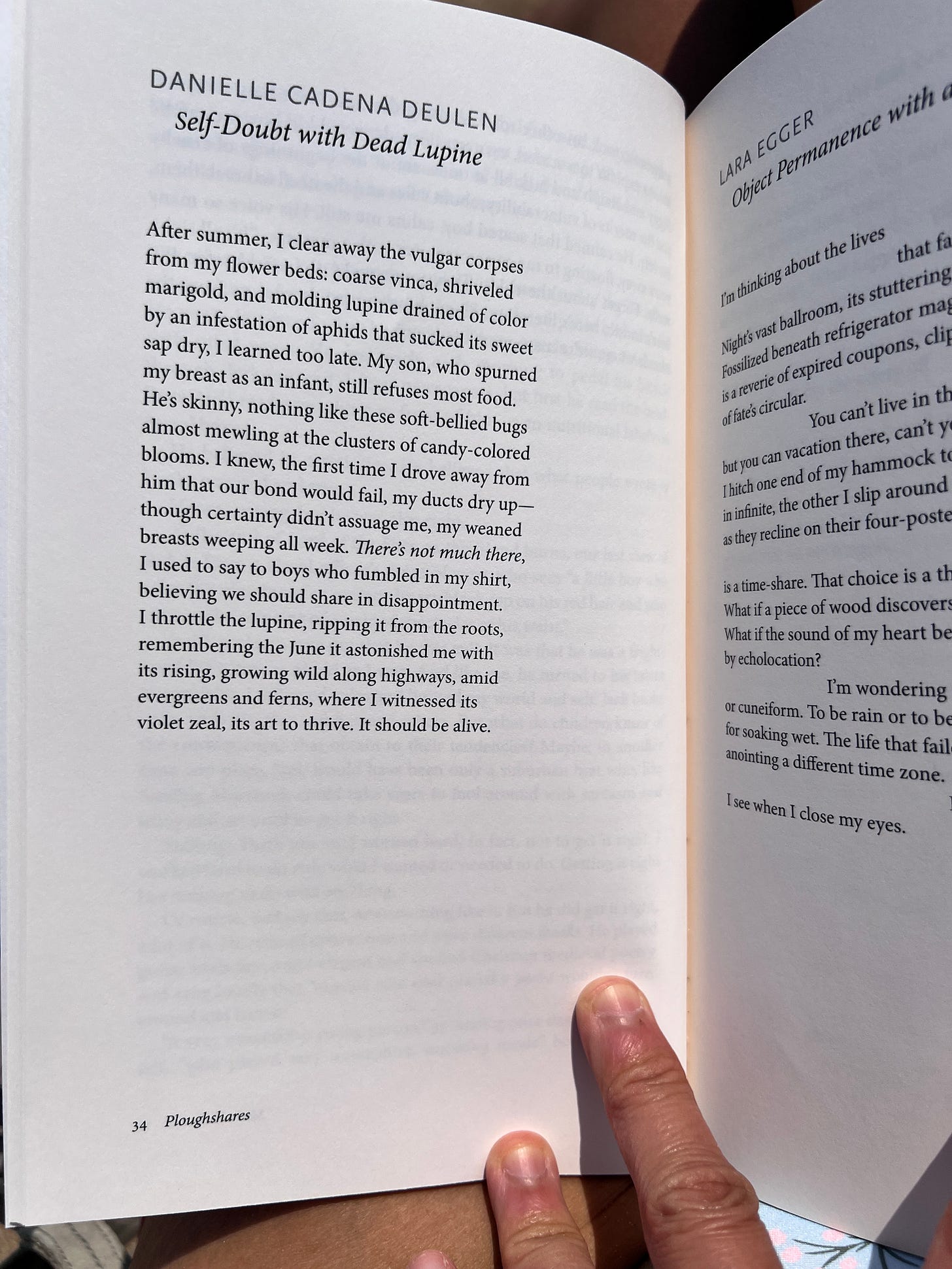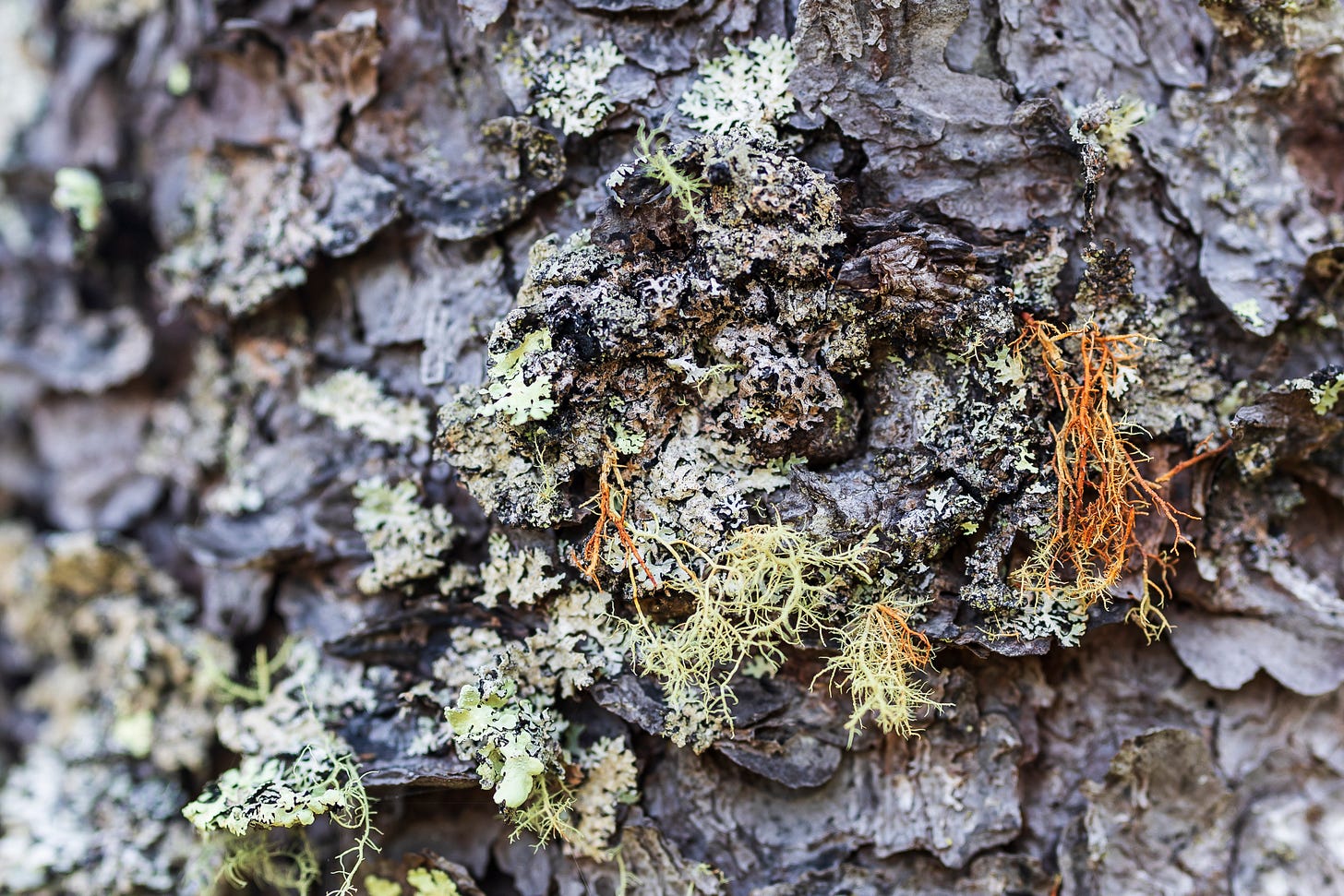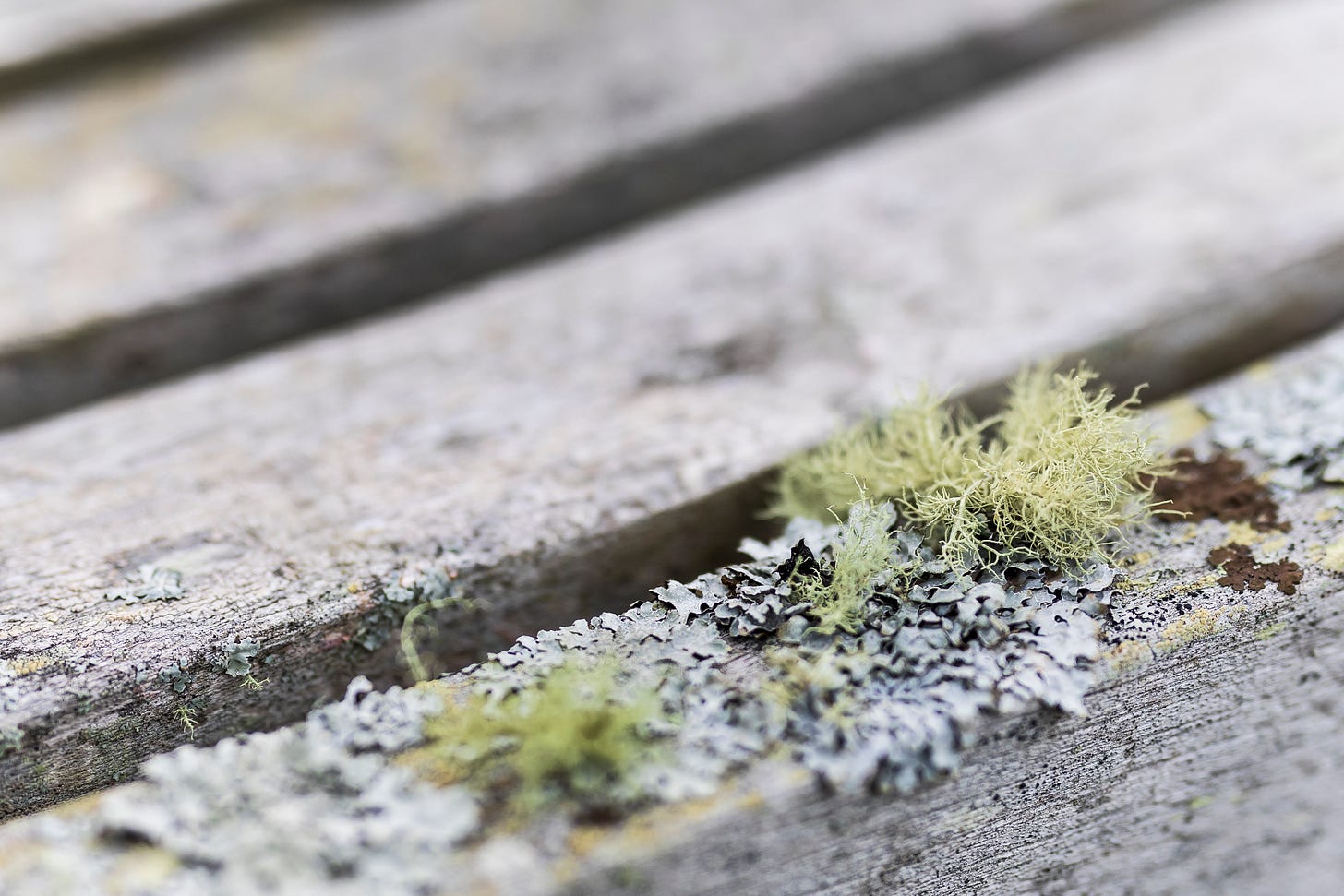
I’m always looking for texture and patterns in nature. I cycle through mini obsessions and one of my current fixations is lichen. My aesthetic predilections often lead to investigator inquiries and, in this case, the University of Maryland’s site provided a wealth of information on the organisms.
Lichen are non-destructive, living organisms composed of a fungus and algae living in a symbiotic relationship. In a symbiotic relationship, two organisms function in a way that is mutually beneficial.
Symbiosis exists between scientist and artist. Both seek to understand processes—the why and the how—and strive to distill the insight for consumption. If the parallel approaches can be protected from “othering,” there’s great potential for the artist and the scientist to light each other up, so to speak, and inspire each other’s work synthesizing data that resonates with a spectrum of diverse learners. For example: collage and wire sculpture to bring lichen to life for visual learners; linear text describing the symbiotic relationship for reading/writing learners.
Moss and algae are primitive plants that derive nourishment through photosynthesis.
Yesterday, I charged in the sun. I watched Lake Michigan’s current and consumed poetry. There are many ways to thrive. The challenge is learning to accept that truth, with or without understanding.
Because the algae derive nutrients through photosynthesis, and the fungi protect the algae from drying out, lichen can live and grow in extremely barren areas.
They form a connection to thrive in otherwise inhospitable environments.
An acquaintance of mine was diagnosed with ADD years ago and describes one benefit as the ability to draw unique constellations. His awareness of his brain’s process transmutes what was once a challenge into a superpower. Though overwhelming at times, I appreciate the web that forms and expands out from where I direct my attention, with seemingly no end to the connection points. These connections pull safety and direction from what could otherwise be experienced as senseless.
Recently, I read an interview in The Microdose that illustrates how personal history, conditioning, and perceptions contribute to our experience of the world:
I’ve met people who talk about having big experiences and spiritual awakenings. There’s one person I met in the church whose story I keep going back to. They talked about being raised in a “spiritual desert”: their family was atheist. They were struggling with mental health issues and found ketamine therapy as an option; they went to a ketamine clinic and had infusions, which didn’t include any aspect of therapy, like preparation of integration. But during one of these infusions they had a full blown mystical experience and it transformed their life. They said they were trying to live in a more ethical way; they got rid of their possessions. It was a drastic, big change in their life.
I presented this case to a research group I meet with, which includes theologians, philosophers, anthropologists, psychologists, psychiatrists, and religious studies scholars. And it was interesting to observe their reaction. People more oriented towards theology were like, ‘Well, this person met God — isn’t this an appropriate response?’ But the people who were more clinically oriented asked if this was something we should be worried about: ‘Are they okay? s this a manic response?’ I found that debate interesting, especially in the light of work on the idea of “spiritual emergencies”: what is the boundary between a spiritual experience or spiritual emergency, and madness or destabilization?
In my writing, I explore how communication breaks down—that moment, that point, when relationships shift from galvanizing to stagnating. But is the breakdown destabilization or is it a spiritual emergency to shed what prohibits growth?
Lichen rarely develops on rapidly growing trees, probably because the bark is shed before the lichen has time to spread.
Lichen forms as a symbiosis between organisms. It thrives on slow growing bark with no harm to the tree; ruby throated hummingbirds line their nests with it and its presence is an indicator of good air quality. With every exchange, there must be balance. While the expectation is of reciprocity, sometimes the exchange disperses outward for a collective benefit. The trees don’t seem to mind, but then again, lichen tends to form on the bark of declining trees.
Is doing no harm enough to justify existence? What about beauty on the arrested surface of death?






